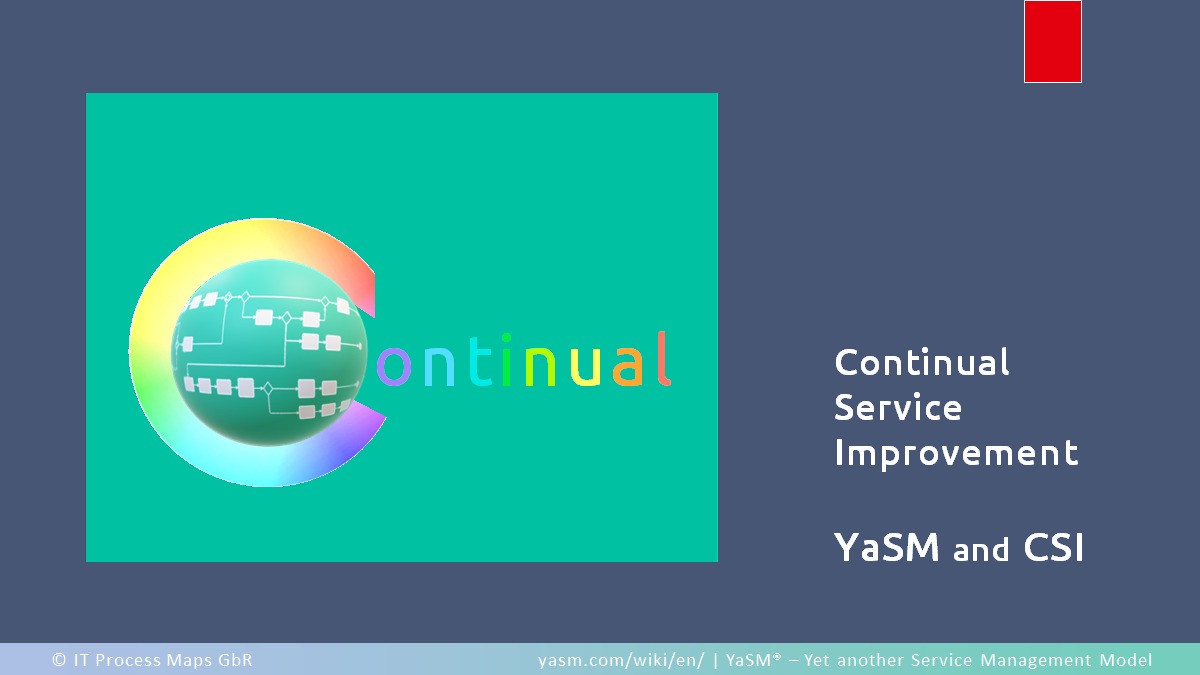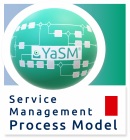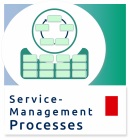Continual Service Improvement
Continual service improvement (CSI) is about 'measuring, reviewing and acting to identify and adopt improvements in service provision". Improvements can be "reductions in weaknesses or enhancements of strenghts, as well as adopting new approaches to existing activities' [1].
Continual improvement in general management
The idea of continual improvement has a long history and was not invented specifically for managing services.
It is modelled upon a well-established management method for continual improvement, known for example as the "Plan-Do-Check-Act" or "PDCA cycle" that was made popular by Edwards Deming (see article in Wikipedia: "PDCA").
CSI in the ITSM frameworks
Continual service improvement has been a prominent topic in service management since the publication of ITIL® v3, where CSI is the fifth stage in the service lifecycle that has been introduced with ITIL v3. The idea behind the service lifecycle is that services pass through a cycle from stratey, design, transition and live operation to continual optimization. CSI is often considered a key element of service management best practice.
It is not difficult to see why: A consistent approach to continual improvement helps to ensure that the services offered to customers remain continuously aligned to business requirements.
But although CSI is a cornerstone of the ITIL® service lifecycle, a few frameworks were quicker to adopt the lifecycle concept and CSI. For instance, COBIT® includes a domain called "Monitoring, evaluating and assessing". And ISO 20000, the international standard for service management, explicitly states that it is based on the Plan-Do-Check-Act cycle.
ITIL® 4 has dropped the service lifecycle concept in favor of a more holistic approach, but ITIL v4 introduces continual improvement as a core component of the ITIL SVS (service value system). Within this component, ITIL 4 describes a model for continual improvement, which provides organizations with a structured approach to implementing improvements.
What is more, ITIL v4 includes continual improvement as one of the "general management practices". This practice aims to "align the organization’s practices and services with changing business needs through the ongoing improvement of products, services and practices" [2].
In VeriSM™, improvement activities are an integral part of the VeriSM model. The VeriSM model is introduced as "a service management operating model for an organization" [3] that includes four "high-level stages" that resemble the ITIL v3 service lifecycle: Define, Produce, Provide and Respond. Continual improvement falls into the Provide stage, where improvement opportunities are to be captured and actioned.
Continual service improvement in YaSM
The YaSM service management model translates the guidance from the various ITSM frameworks into a streamlined process for the continual improvement of services.
The CSI process includes high-level activities such as
- holding regular customer meetings
- performing regular service reviews
- analyzing service quality reports and other inputs
- evaluating if the services are delivered according to expectations
- assessing if the services can be provided in a better or more economical way.
If corrective action is required, the CSI process is responsible for identifying solutions and for starting up service improvement initiatives. Such initiatives are typically small projects which are tracked and managed through a simple service improvement plan.
All of this is quite straightforward. You can find a complete description of the service improvement process according to YaSM here in the YaSM Wiki, including definitions of the sub-processes, details about the process outputs, and a RACI matrix.
Video

Service improvement is not simply about optimizing customer satisfaction or maximizing profits. The real point is to avoid stagnation!
(From our video series "The simple principles of good service management").
Watch the video:
⯈ If you stop improving, you will fall behind (6:56 min.)
Related pages
- YaSM service management processes ➔ LP5: Improve the services
- ITIL 4 practices and YaSM processes
- YaSM and ITIL V3 ➔ YaSM vs. ITIL CSI
External links and references
[a] IT Process Wiki - ITIL CSI. -- S. Kempter: IT Process Wiki, "ITIL continual service improvement (CSI)". - IT Process Maps; Lindau (Bodensee), Germany.
[1] The Cabinet Office: ITIL® Continual Service Improvement (2011 Edition). - The Stationery Office; London, UK.
[2] AXELOS: ITIL® Foundation, ITIL 4 Edition. - The Stationery Office; Norwich, UK, 2019.
[3] IFDC (International Foundation for Digital Competences) (2017). VeriSM™ - A Service Management Approach for the Digital Age. Zaltbommel, Netherlands: Van Haren Publishing.
By: Stefan Kempter ![]() , IT Process Maps.
, IT Process Maps.
Continual improvement in general management › CSI in the ITSM frameworks › Continual service improvement in YaSM › Video






